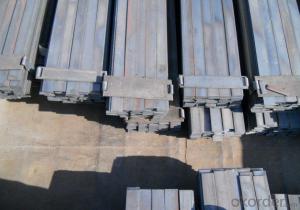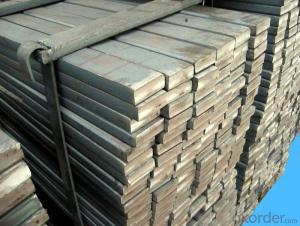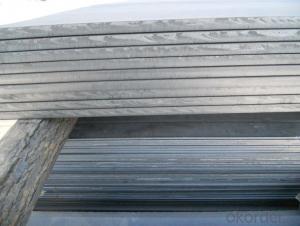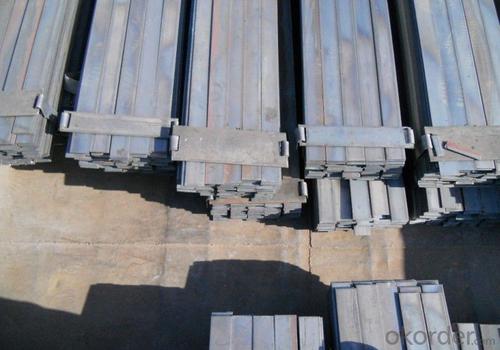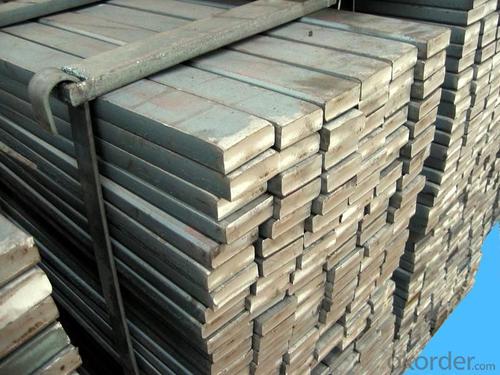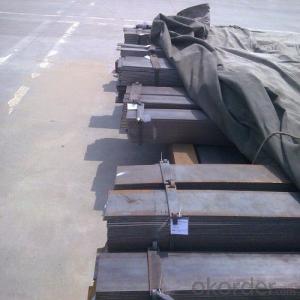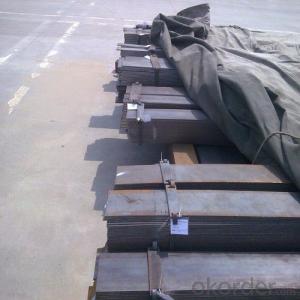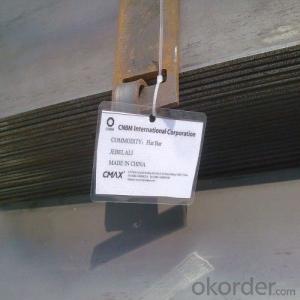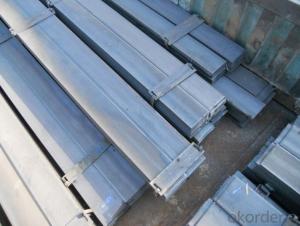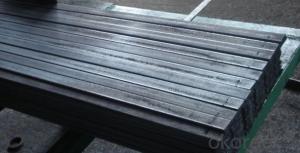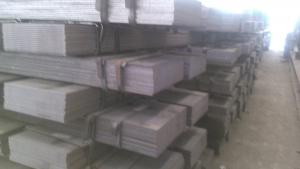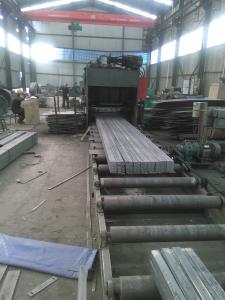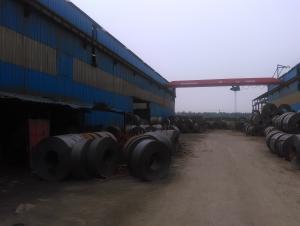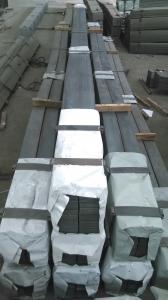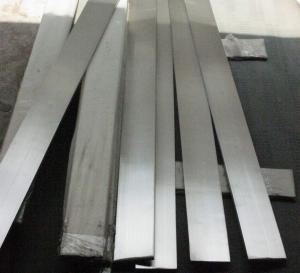Hot Rolled Flat Bar with Material Grade Q235B and Good Price
- Loading Port:
- Tianjin
- Payment Terms:
- TT OR LC
- Min Order Qty:
- 25 m.t
- Supply Capability:
- 10000 m.t/month
OKorder Service Pledge
OKorder Financial Service
You Might Also Like
Product Description:
OKorder is offering high quality Flat Bar at great prices with worldwide shipping. Our supplier is a world-class manufacturer of steel, with our products utilized the world over. OKorder annually supplies products to European, North American and Asian markets. We provide quotations within 24 hours of receiving an inquiry and guarantee competitive prices.
Product Applications:
Flat Bars are ideal for structural applications and are widely used in the construction of buildings and bridges, and the manufacturing, petrochemical, and transportation industries.
Product Advantages:
OKorder's Flats Bars are durable, strong, and resist corrosion.
Main Product Features:
· Premium quality
· Prompt delivery & seaworthy packing (30 days after receiving deposit)
· Corrosion resistance
· Can be recycled and reused
· Mill test certification
· Professional Service
· Competitive pricing
Product Specifications:
Manufacture: Hot Rolled
Grade: Q195 – 235
Certificates: ISO, SGS, BV, CIQ
Length: 6m – 12m, as per customer request
Packaging: Export packing, nude packing, bundled
Chemical composition of Q235
Alloy No | Grade | Element(%) | ||||
C
| Mn
| S
| P
| Si
| ||
Q235
|
B
|
0.12—0.20 |
0.3—0.7 |
≤0.045 |
≤0.045
|
≤0.3
|
Physical properties of Q235
Alloy No | Grade | Yielding strength point(Mpa) | Tensile strength (Mpa) | Elongation after fracture(%) | ||||||
Thickness (mm) | Thickness (mm) | |||||||||
≤16 | >16--40 | >40--60 | >60--100 | ≤16 | >16--40 | >40--60 | >60--100 | |||
≥ | ≥ | |||||||||
Q235 |
B |
235 |
225 |
215 |
205 |
375--500 |
26 |
25 |
24 |
23 |
FAQ:
Q1: Why buy Materials & Equipment from OKorder.com?
A1: All products offered byOKorder.com are carefully selected from China's most reliable manufacturing enterprises. Through its ISO certifications, OKorder.com adheres to the highest standards and a commitment to supply chain safety and customer satisfaction.
Q2: How do we guarantee the quality of our products?
A2: We have established an advanced quality management system which conducts strict quality tests at every step, from raw materials to the final product. At the same time, we provide extensive follow-up service assurances as required.
Q3: Can stainless steel rust?
A3: Stainless does not "rust" as you think of regular steel rusting with a red oxide on the surface that flakes off. If you see red rust it is probably due to some iron particles that have contaminated the surface of the stainless steel and it is these iron particles that are rusting. Look at the source of the rusting and see if you can remove it from the surface.
Images:
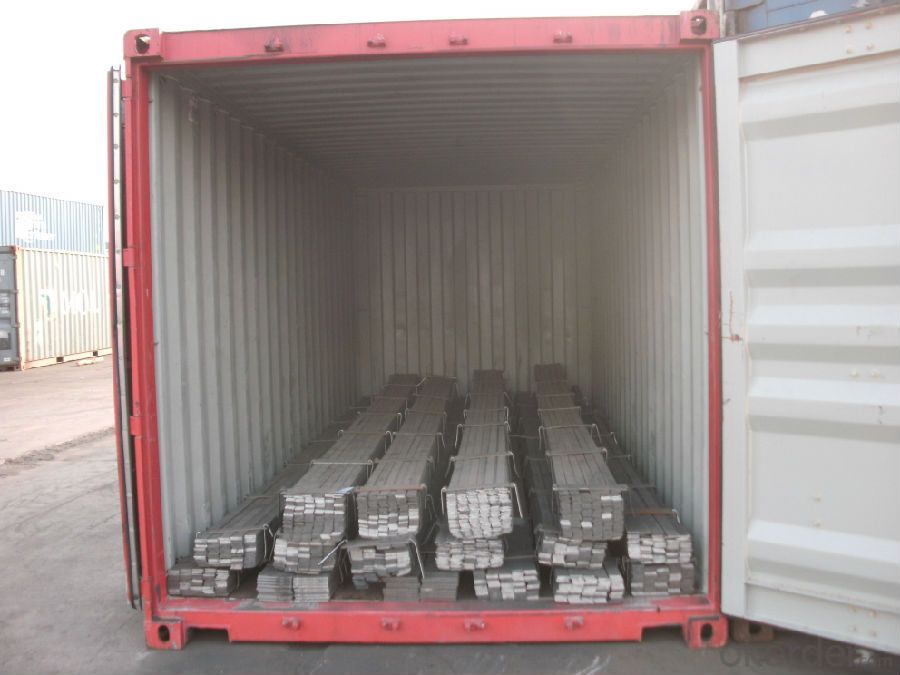
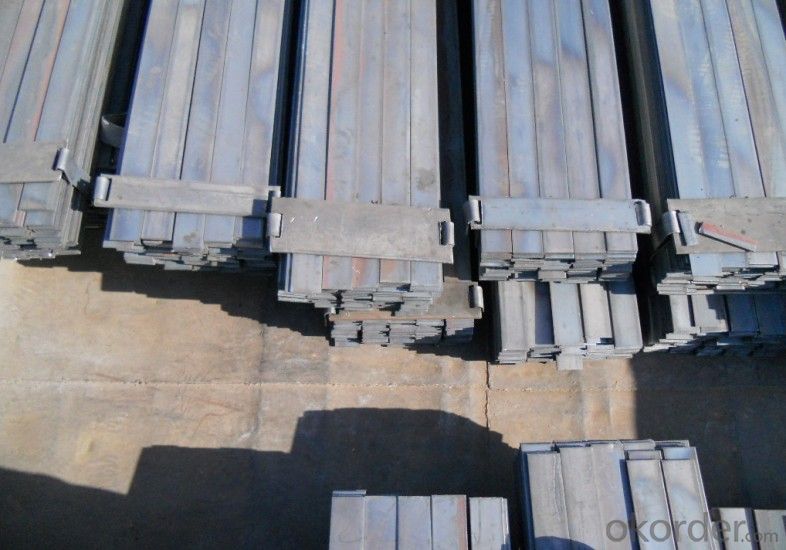
- Q: Can steel flat bars be used for making cutting tools?
- Yes, steel flat bars can be used for making cutting tools. Steel is a common material choice for cutting tools as it offers high strength, durability, and sharpness. Steel flat bars can be shaped, sharpened, and hardened to create a variety of cutting tools such as knives, chisels, or shears.
- Q: Are steel flat bars available in different grades?
- Different grades of steel flat bars are available. These grades are determined by the chemical composition, mechanical properties, and intended use of the bars. Mild steel, carbon steel, stainless steel, and alloy steel are common examples of these grades. Each grade possesses distinct properties and characteristics that make them suitable for specific applications. When choosing the appropriate grade, factors like required strength, corrosion resistance, machinability, and weldability must be taken into consideration. The specific requirements of the project or application should be carefully considered in order to select the most suitable grade of steel flat bar.
- Q: What are the weight calculations for steel flat bars?
- The weight of steel flat bars depends on the dimensions and density of the steel used. To calculate the weight of a steel flat bar, one typically multiplies the bar's cross-sectional area by its length and density. The cross-sectional area of a flat bar can be found by multiplying its width by its thickness. For instance, if a flat bar measures 2 inches in width and 0.25 inches in thickness, the cross-sectional area would be 0.5 square inches. To determine the weight, one would then multiply the cross-sectional area by the length of the bar and the density of the steel. Steel density can vary depending on the alloy, but a common value is approximately 7.85 grams per cubic centimeter (or 7850 kilograms per cubic meter). Taking the previous example and assuming a length of 10 feet (or 120 inches), the weight of the steel flat bar can be calculated as follows: Weight = Cross-sectional area x Length x Density Weight = 0.5 square inches x 120 inches x 7850 kilograms per cubic meter It is important to ensure that the units are consistent. If inches are used for the dimensions, the density may need to be converted to pounds per cubic inch or ounces per cubic inch. Keep in mind that these weight calculations are based on the assumption that the steel flat bar is solid. If the bar has any hollow or cut-out sections, the weight calculation would need to be adjusted accordingly. Moreover, different steel alloys may have different densities, so it is always advisable to consult the specific density for the type of steel being used.
- Q: How large is the flat steel used for equipotential grounding?
- 3.2.15 general equipotential connection with the sectional area of protective bonding conductors, shall not be less than the maximum protection of conductor size distribution line 1/2, protective bonding conductor cross-sectional area of the minimum and maximum value shall comply with the provisions of table 3.2.15.
- Q: Do steel flat bars have a specific yield strength?
- Yes, steel flat bars have a specific yield strength. The yield strength of a steel flat bar refers to the amount of stress it can withstand before it starts to deform permanently. This property is typically specified by manufacturers and can vary depending on the type and grade of steel used.
- Q: Can steel flat bars be used for making tools or machinery parts?
- Yes, steel flat bars can be used for making tools or machinery parts due to their excellent strength, durability, and versatility. They can be easily shaped, welded, and machined to create various components such as blades, brackets, supports, and frames. Additionally, their ability to withstand high temperatures and resist corrosion makes them suitable for applications in various industries.
- Q: What are the different sizes of steel flat bars?
- The sizes of steel flat bars can vary depending on the manufacturer and the specific requirements of the project. However, common sizes of steel flat bars include widths ranging from 1/8 inch to 24 inches, and thicknesses ranging from 3/16 inch to 2 inches. These sizes provide a wide range of options to accommodate various applications in industries such as construction, manufacturing, and fabrication.
- Q: Can steel flat bars be welded or joined together?
- Steel flat bars can indeed be welded or joined together. The process of welding is widely employed to join metal components, including steel flat bars. During welding, the edges of the steel bars are melted and fused together using a welding filler material. This results in a robust and long-lasting bond between the flat bars. However, it is crucial to verify that the steel flat bars being welded possess the same or similar composition to avoid any complications with the quality of the weld. Moreover, employing appropriate welding techniques and equipment is essential to attain a weld of superior quality and guarantee the structural soundness of the joined steel flat bars.
- Q: What are the different types of corners available for steel flat bars?
- Steel flat bars typically come with two types of corners: square corners and rounded corners. 1. Square corners: This is the most common type of corner available for steel flat bars. As the name suggests, the corners are square or 90-degree angles. Square corners provide a clean and sharp appearance and are often preferred when a precise and angular look is desired. They are also easier to fit and join with other materials, making them versatile for various applications. 2. Rounded corners: Some steel flat bars are manufactured with rounded corners instead of square corners. Rounded corners have a smooth curve rather than a sharp angle, providing a more streamlined and aesthetically pleasing appearance. This type of corner is often chosen for safety reasons, as it eliminates potential sharp edges that can cause injuries. Rounded corners are commonly used in architectural and decorative applications where a softer and more visually appealing design is desired. The choice between square corners and rounded corners depends on the specific requirements of your project. Consider factors such as the intended application, safety considerations, design preferences, and ease of installation when selecting the appropriate type of corner for your steel flat bars.
- Q: Can steel flat bars be used for making furniture or fixtures?
- Yes, steel flat bars can definitely be used for making furniture or fixtures. Steel flat bars are versatile and strong, making them ideal for creating durable and functional pieces. They can be used to construct various types of furniture such as tables, chairs, shelves, and cabinets, as well as fixtures like brackets, frames, and supports. Steel flat bars offer stability and structural integrity, making them a popular choice in industrial and modern designs. Additionally, steel can be easily welded, bent, or shaped to meet specific design requirements, providing flexibility in creating unique and custom furniture or fixtures.
Send your message to us
Hot Rolled Flat Bar with Material Grade Q235B and Good Price
- Loading Port:
- Tianjin
- Payment Terms:
- TT OR LC
- Min Order Qty:
- 25 m.t
- Supply Capability:
- 10000 m.t/month
OKorder Service Pledge
OKorder Financial Service
Similar products
Hot products
Hot Searches
Related keywords
